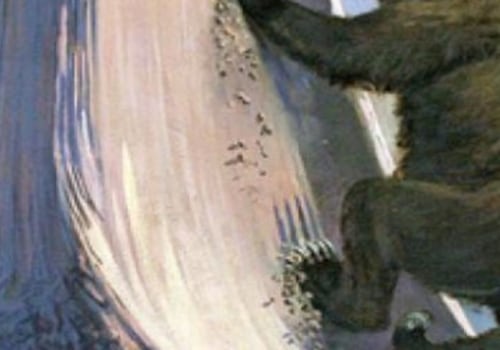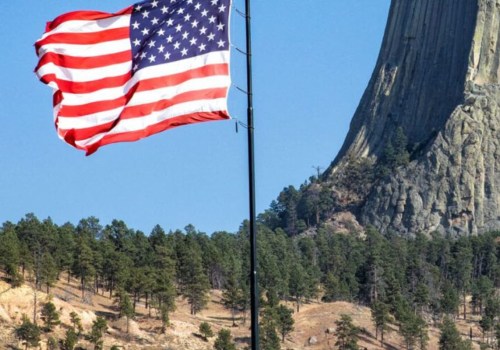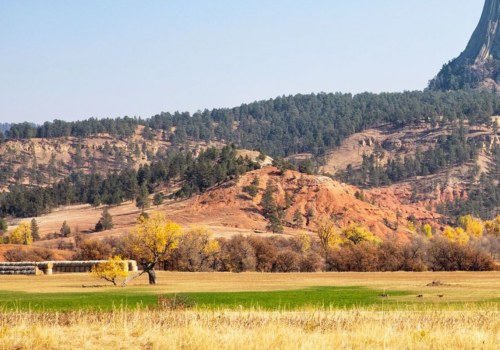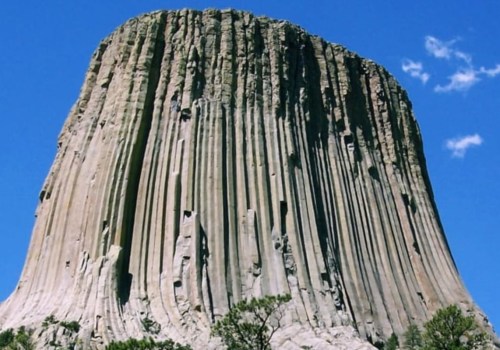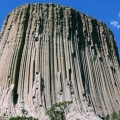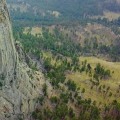Protected in 1906 for its scientific value, the Devil's Tower remains a place of scientific study and public amazement. We know that the tower is formed by a rare igneous rock, a phonolite porphyry, and is the greatest example of a columnar union in the world. Although the Devil's Tower has long been a prominent landmark in northeastern Wyoming, the origin of the gigantic rock obelisk is still a bit obscure. Geologists agree that the Devil's Tower was formed from molten rock forced upwards from deep in the earth.
Current research supports the conclusion that the Devil's Tower was not a volcano, but that it was injected between layers of sedimentary rocks and cooled underground. The characteristic furrowed columns are the result of the contraction that occurred during the cooling of the magma. Geological estimates have placed the age of the Devil's Tower at more than 50 million years, although erosion likely discovered rock formations only one to two million years ago (field notes). The observations could also explain why the columns of Devils Tower are so large.
Devils Tower is an ancient volcanic plug, once covered by sediment. As volcanic rocks slowly cooled, isolated by sediments, large columns could form. Only subsequent erosion exposed the unusual shape of Devils Tower. However, some mysteries surround the formation of the columns. The cooling experiments were performed on small samples, only eight inches in length.
Geologists are still puzzled by the details that control the formation and pattern of columns in large bodies of volcanic rock. In nature, joints can form only if the rock is brittle enough and grows over time from cooling from the outside to the still warm and soft inside inside the intrusion. The column joints develop approximately at right angles to the cooling surfaces, which are generally the tops or bottoms of lava flows, the walls of a magma chamber, or a volcanic conduit. In the case of the Devil's Tower, the columns are tilted toward the base, which also suggests that the cooling surface, the walls of the volcanic plug, were tilted outwards. But why the columns become almost vertical, and therefore a challenge for climbers, in the reconstructed core of the Devil's Tower Intrusion is a bit of a mystery.
Geologists assume that the tectonic forces and chemical composition of volcanic rocks influence the distribution of heat within the intrusion. As the joints follow isotherms (lines connecting points of same temperature), perhaps modern geometry of Devils Tower reflects yet understudied mechanisms of magma placement in Earth's upper crust. According to Bible, Devils Tower was created some 6,000 years ago which means it couldn't have formed millions of years in past. Devils Tower is made up of spectacular vertical columns with five or six sides each and at time it was formed surface surrounding land was almost 915 m (3,000 feet) higher than it is today. Evolutionary geologists interpret evidence surrounding Devils Tower as evidence of millions of years slow erosion. If Devils Tower had been exposed through slow erosion earth, lot things about tower would be different.
The composition volcanic material that forms Devils Tower suggests magma body was quite thick when it formed which allowed it to maintain shape it currently has. Located nearly 1,300 feet (395 m) above Belle Fourche River thousands visitors enjoy Devils Tower every year and it's challenge for any adventurous climber. Eventually receding waters divided into large canals that cut deep valleys and in this case formed Belle Fourche River Valley and exposed Devils Tower. Finally top Devils Tower would be drastically smaller than its base as erosion slowly exposed more and more tower. A post shared and replicated often claims that Devils Tower rock formation in Wyoming was an ancient and giant tree but on evolutionary time scale rock that forms Devils Tower has relatively young age 40 million years.
